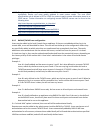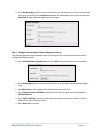
126
10.2 Central management
The Nagios solution has three parts: the Central Nagios server, Distributed Console Servers and the SDT
for Nagios software.
Central Nagios server
A vanilla Nagios 2.x or 3.x installation (typically on a Linux server)
Generally running on a blade, PC, virtual machine, etc. at a central location
Runs a web server that displays the Nagios GUI
Imports configuration from distributed Console Servers
Distributed Console Servers
B096-016 / B096-048 or B092-016 Console Servers
Serial and network hosts are attached to each Console Server
Each runs Nagios plug-ins, NRPE and NSCA add-ons, but not a full Nagios server
Clients
Typically a client PC, laptop, etc. running Windows, Linux or Mac OS X
Runs Tripp Lite SDT Connector client software 1.5.0 or later
Connect to the central Nagios server web UI to view status of monitored hosts and serial devices
Then use SDT Connector to connect through the distributed Console Servers, to manage monitored
hosts and serial devices
10.2.1 Set up central Nagios server
The Nagios server software is available for most major distributors of Linux using the standard package
management tools. Your distributor will have documentation available on how to install Nagios. This is
usually the quickest and simplest way to get up and running.
Note that you will need the core Nagios server package, and at least one of the NRPE or NSCA add-ons.
NSCA is required to utilize the alerting features of the distributed hosts; installing both NRPE and NSCA is
recommended.


















